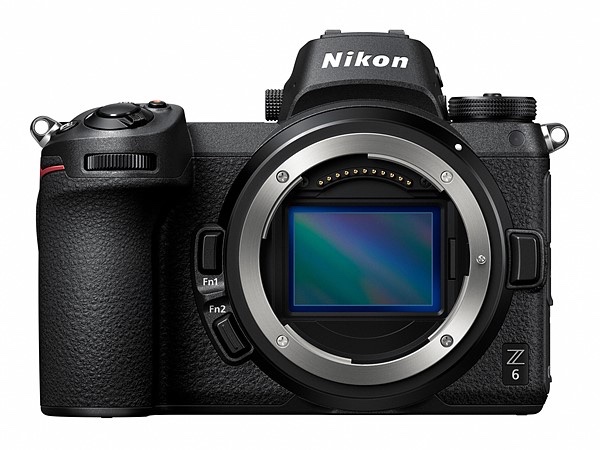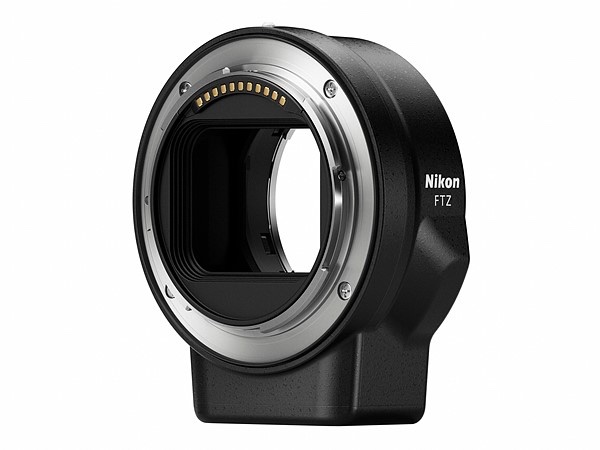Promising.

The 24mp Nikon Z6 FF mirrorless body.
After much teasing and speculation, Nikon today announced two new FF mirrorless bodies, the 45mp Z7 and the 24mp Z6.
The motivation for these releases is likely the increasing popularity of the Sony FF mirrorless bodies but let’s get one big misconception out of the way first. There is no reason to buy an FF mirrorless body if you want to materially reduce the bulk and weight of your gear. While a mirrorless body should be an ounce or two lighter than its mirrored counterpart, for the mirror and associated mechanism are deleted, the size of the lenses will be unchanged. That means when compared to MFT lenses, FF lenses are positively gigantic. On a related note this is why mirrorless APS-C bodies make so little sense if bulk and weight reduction are motives. The lenses are still very large.
No, the primary reason to buy a mirrorless body is silent operation as they generally come with an electronic shutter option, as well as potentially very high framing rates using that shutter, for no high inertia flapping mirror has to be raised and lowered multiple times a second.
Nikon has one other legacy advantage which Canon does not offer and is irrelevant with Sony bodies. Canon made multiple changes to its lens mount over the past three decades, from RM to FL to FD to the current EF version, each largely incompatible with its successor. Legacy Canon lenses are stuck with legacy Canon bodies, fine as both may be. As for Sony, there’s no population of legacy lenses with this more recent entrant to FF.
Thus, with tens of millions of legacy Nikon F lenses out there a significant issue with the new Z6 and Z7 bodies is backwards compatibility. Will my legacy Nikkor work?
This issue is not lost on Nikon which has announced the FTZ adapter for legacy lenses at a reasonable $250, or $150 if bought with one of the new bodies.

The Nikon FTZ adapter for legacy lenses. No AF with AF/AF-D Nikkors.
Many readers of this journal have converted their ancient non-Ai Nikkors to Ai as I indicate here. Then, to add icing to the cake they have added a CPU, finishing the whole thing off with one of my many custom lens profiles. Now that pre-Ai Nikkor offers aperture priority auto exposure with full recording of EXIF data. Make that Nikkor a late MF Ai-S model and you get linear aperture ring response meaning that you can pass aperture control back to one of the command dials on the Nikon body and still retain linear exposure automation. Will the new Nikon FTZ adapter maintain this level of data flow and automation? Looking at the specs the answer is a resounding ‘Yes’. The adapter includes pass through electrical contacts for recording of the maximum aperture of the lens and of EXIF data, and appears to retain lens aperture stop down on exposure. And the new mirrorless bodies add focus peaking as a manual focus aid.
With the first generation of AF Nikkors, the AF/AF-D optics, the situation is not as happy, for the autofocus feature is lost. Thus AF/AF-D optics appear to revert to the same operational specifications as their pre-AI, Ai and Ai-S predecessors. Sad, but for Nikon to have retained AF with the AF/AF-D optics would have meant retaining the manual ‘screwdriver’ focus motor in the body, adding bulk and weight. Maybe one day the screwdriver motor will be added to the adapter? Certainly this would make all AF/AF-D Nikkor owners very happy and would help retain the smaller body dimensions of the new mirrorless bodies.
AF Nikkors which have the focus motor inside the lens, like the AF S optics, appear to retain autofocus with the adapter.
More as we learn about theses exciting developments from Japan’s premier camera and lens maker. As a minimum the prospect of enjoying IBIS with legacy MF lenses has one salivating.